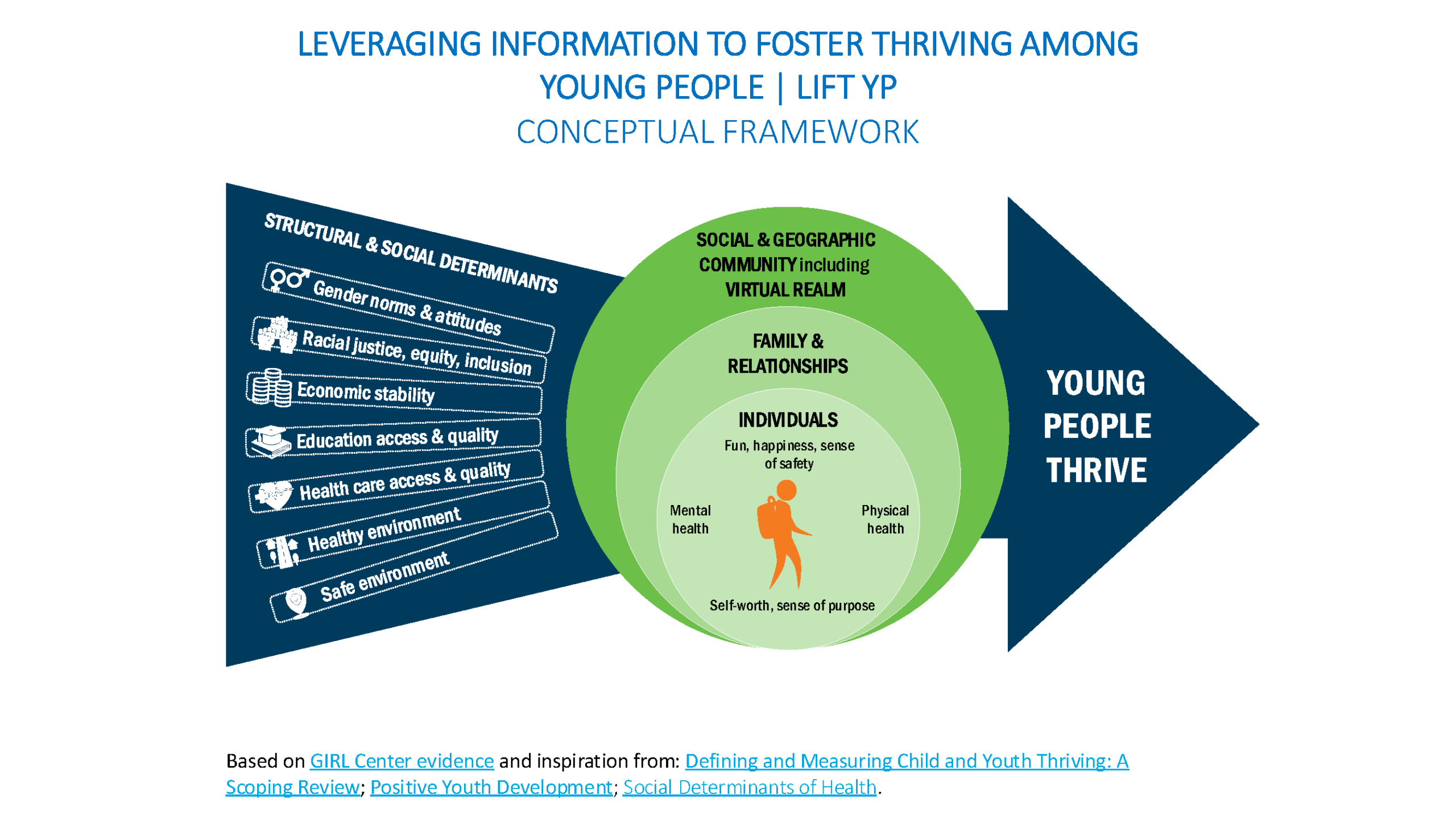
The GIRL Center is a global hub advancing gender equity through conducting cutting-edge research, communicating ideas and evidence, and nurturing talent. Our body of research produces evidence of what works, what doesn’t work, and how to enhance adolescents’ opportunities to thrive. Built on decades of Population Council’s research, our work reflects a consistent commitment to young people who face the greatest threats to accessing their human rights. Not only does our work help reduce risks that adolescents face, it also prioritizes young people who are excluded from local systems and structures.
We recognize that a range of forces—such as racism, sexism, homophobia, and ableism—undermine young people’s potential everywhere. There are untapped opportunities to use our evidence from our learnings in low- and middle-income countries (LMICs) to address similar challenges that exist in the United States. Since the GIRL Center’s strength lies in bringing evidence, expertise, and proven programmatic approaches to addressing these divides, those lessons are primed to be applied across international borders.
We have developed a conceptual framework to guide work with young people in the context of the United States. The framework prioritizes young people’s wellbeing and ability to thrive from a holistic and multidimensional perspective. Informed by the expertise and evidence from the GIRL Center’s activities and research, this framework takes a capabilities approach to applying lessons learned. It builds upon several key frameworks from the United States and around the globe.
The framework spans three, interrelated levels: individuals, families and relationships, and social and geographic community—including the virtual realm. The framework also takes into account social and structural determinants, which are synergistic forces that interact with all levels of a young person’s socio-ecology.
While social determinants are widely accepted, we added structural determinants. The latter embeds inequities in communities. The framework prioritizes seven determinants that shape young people’s ability to thrive in the US:1
- Gender norms and attitudes: gender socialization and its interaction with gender identity.
- Racial justice, equity, and inclusion: structural and systemic racism based on racial and ethnic identity.
- Economic stability: socioeconomic status, household income, and food security.
- Education access and quality: ability to learn, school accessibility, teacher preparedness, and other school system elements.
- Health care access and quality: access to culturally appropriate, affordable, evidence-based care.
- Healthy environment: living conditions including green and well-lit open social spaces, and access to healthy food.
- Safe environment: freedom from violence, safe mobility, and resilience to climate change.
Framework image is based on GIRL Center evidence and inspiration from: Defining and Measuring Child and Youth Thriving: A Scoping Review; Positive Youth Development; Social Determinants of Health.
Young people do not live in a vacuum. They are influenced by the levels of their socio-ecological environment, which shapes their values, ethics, attitudes, and norms—as well as the transition to adulthood. Understanding how the determinants interact and influence the three levels is vital to young people’s thriving. First, at the individual level, the framework reflects objective and subjective measures of wellbeing. The domains are both physical and psychological: physical and mental health; positive identity; sense of self-worth and purpose; and fun, happiness, and sense of safety. Second, at the family and relationships level, young people’s relationships and interactions influence their wellbeing and their ability to thrive. Third, at the social and geographic community level, their environment includes relationships in the digital and virtual realms.
To ensure its accuracy and relevance, we recommend adapting this framework in consultation with young people themselves—as well as with parents, service providers, and community leaders.
The framework can guide research, advocacy, policymaking, and programming. It can help coalitions of researchers; youth-led advocacy networks; federal- and state-level funders and planners; and others who promote positive youth development and strengthen young people’s capabilities. Multiple potential uses for the framework exist. Examples include:
- structuring research agendas that prioritize evidence gaps across determinants and levels of the socio-ecology;
- establishing measurement domains and indicators;
- promoting holistic policymaking and program planning to reduce negative outcomes by addressing the upstream determinants of wellbeing; and
- organizing mechanisms for collaboration across sectors and systems.
We hope that young people, aged between 10 and 24 years, benefit from the application of the framework. In a constrained funding environment, it offers a way to share learnings across countries and better understand young people’s lived experiences so we can design more effective, equitable programs and services to improve youth health and wellbeing—no matter where they live.

